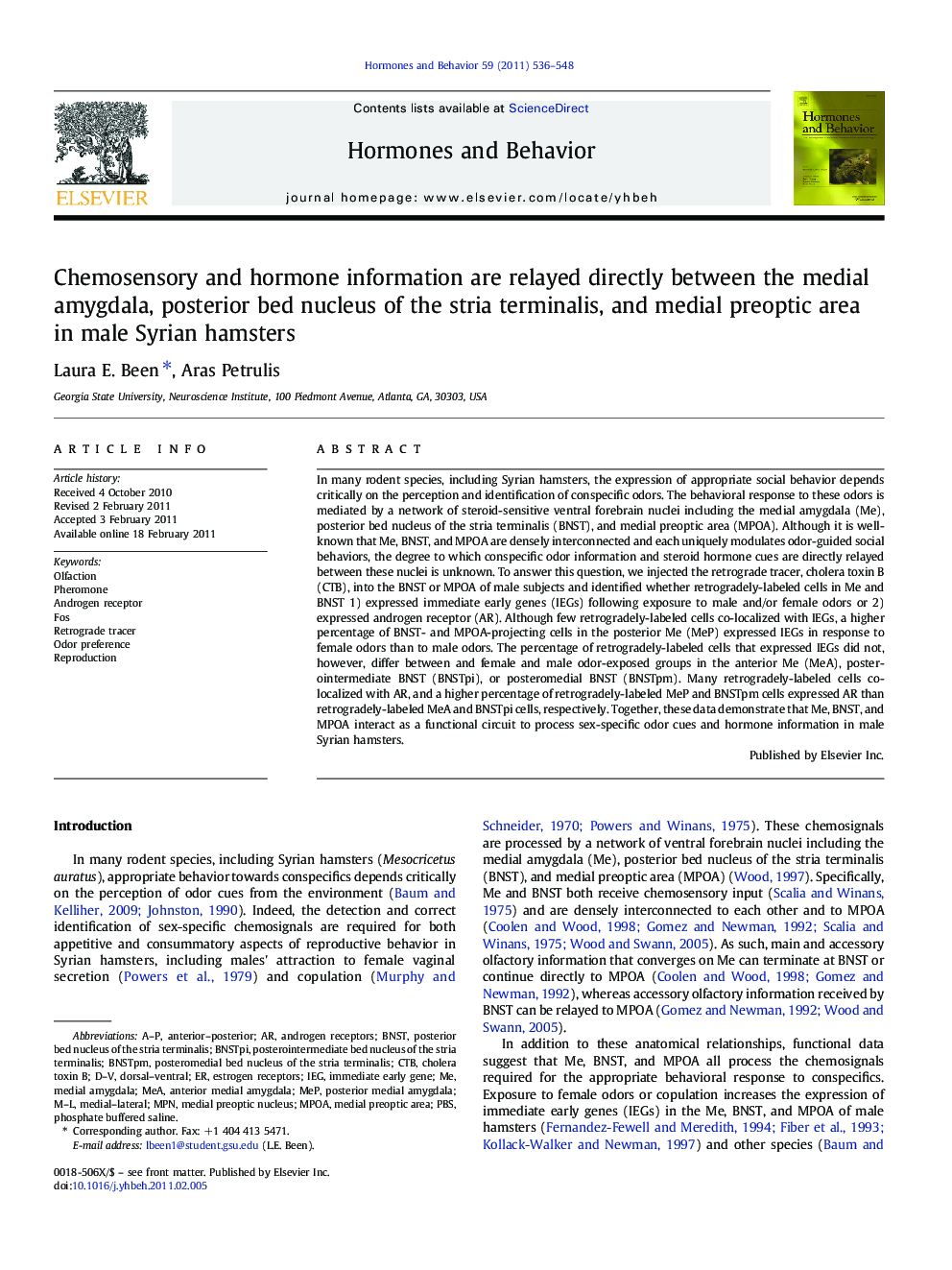| کد مقاله | کد نشریه | سال انتشار | مقاله انگلیسی | نسخه تمام متن |
|---|---|---|---|---|
| 323185 | 540522 | 2011 | 13 صفحه PDF | دانلود رایگان |

In many rodent species, including Syrian hamsters, the expression of appropriate social behavior depends critically on the perception and identification of conspecific odors. The behavioral response to these odors is mediated by a network of steroid-sensitive ventral forebrain nuclei including the medial amygdala (Me), posterior bed nucleus of the stria terminalis (BNST), and medial preoptic area (MPOA). Although it is well-known that Me, BNST, and MPOA are densely interconnected and each uniquely modulates odor-guided social behaviors, the degree to which conspecific odor information and steroid hormone cues are directly relayed between these nuclei is unknown. To answer this question, we injected the retrograde tracer, cholera toxin B (CTB), into the BNST or MPOA of male subjects and identified whether retrogradely-labeled cells in Me and BNST 1) expressed immediate early genes (IEGs) following exposure to male and/or female odors or 2) expressed androgen receptor (AR). Although few retrogradely-labeled cells co-localized with IEGs, a higher percentage of BNST- and MPOA-projecting cells in the posterior Me (MeP) expressed IEGs in response to female odors than to male odors. The percentage of retrogradely-labeled cells that expressed IEGs did not, however, differ between and female and male odor-exposed groups in the anterior Me (MeA), posterointermediate BNST (BNSTpi), or posteromedial BNST (BNSTpm). Many retrogradely-labeled cells co-localized with AR, and a higher percentage of retrogradely-labeled MeP and BNSTpm cells expressed AR than retrogradely-labeled MeA and BNSTpi cells, respectively. Together, these data demonstrate that Me, BNST, and MPOA interact as a functional circuit to process sex-specific odor cues and hormone information in male Syrian hamsters.
Research highlights
► Female and male odor cues are conveyed directly between Me, BNST, and MPOA.
► MeP, in particular, conveys sex-specific odor information to BNST and MPOA.
► AR-bearing cells project directly between Me, BNST, and MPOA.
► A higher percentage of AR+ cells in MeP than in MeA project to MPOA and BNST.
► A higher percentage of AR+ cells in BNSTpm than in BNSTpi project to MPOA.
Journal: Hormones and Behavior - Volume 59, Issue 4, April 2011, Pages 536–548